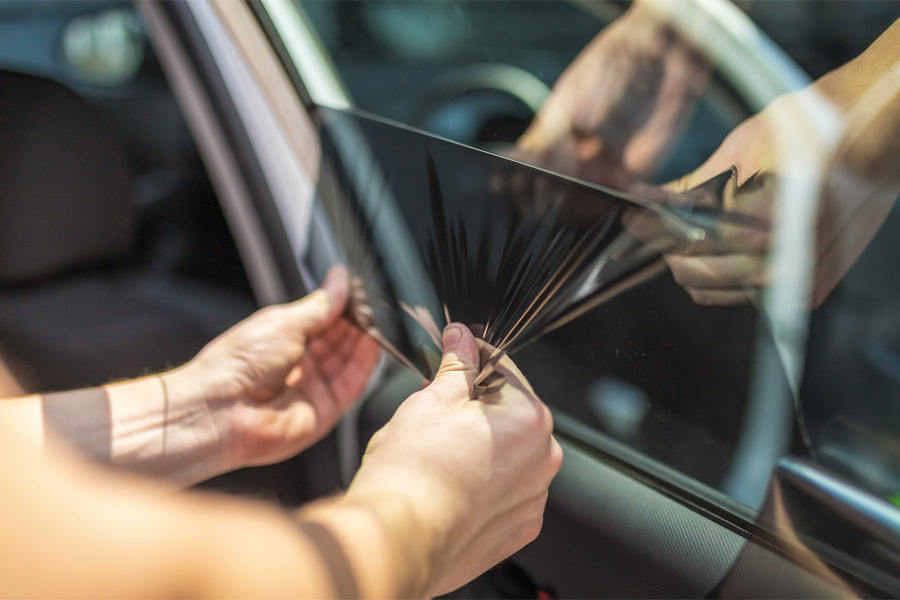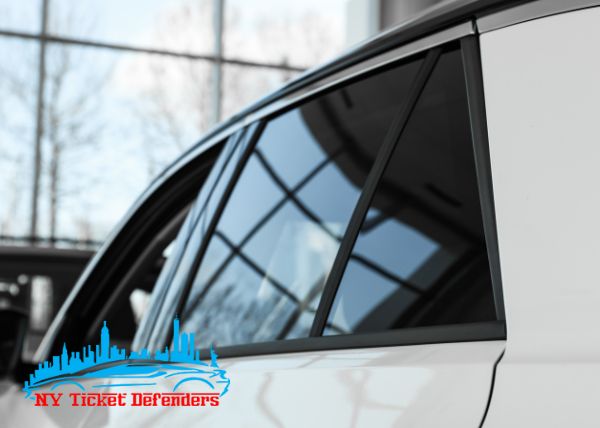Custom Car Window Tinting Solutions for a Streamlined and Stylish Look
Wiki Article
Home Window Tinting Rules and Standards: What You Required to Know Prior To Tinting Your Auto
Prior to proceeding with window tinting for your car, it is essential to acquaint on your own with the diverse legislations and standards that govern this technique throughout various states. These laws dictate the acceptable degrees of color darkness, typically measured by visible light transmission (VLT) percents, and include particular stipulations for front windshields intended at guaranteeing roadway safety and security.Review of Window Tinting Regulations
Home window tinting regulations are frequently subject to variant across various territories, mirroring neighborhood policies and safety considerations. These laws determine the permissible degrees of color darkness and reflectiveness on lorry home windows, guaranteeing that vehicle drivers preserve adequate visibility while likewise shielding versus dangerous UV rays and warm.Most regulations categorize home window tinting based upon the Visible Light Transmission (VLT) portion, which suggests the quantity of light that can pass with the home window. Usually, reduced VLT percents indicate darker colors. Legislations commonly set apart between the front, side, and back windows, with stricter constraints applied to the front windshield to enhance security for both the chauffeur and other road customers.
Compliance with window tinting regulations is vital, as offenses can result in fines, necessary removal of the color, and potential increases in insurance premiums. It is vital for automobile proprietors to familiarize themselves with regional regulations before continuing with window tinting installations.
State-by-State Tint Regulations
Comprehending the details window tinting guidelines in each state is essential for car owners seeking to abide by the legislation. Each state in the U.S. has developed its very own set of rules controling home window tinting, which can differ dramatically. These guidelines commonly determine the allowed degrees of tint darkness, the kinds of windows that can be tinted, and any type of medical exceptions that might apply.For example, states like California have rigorous constraints on color darkness for front windows, while others, such as New Mexico, may allow darker colors. Furthermore, certain states mandate certain exposure percentages for numerous home windows, including the windshield, front side windows, and rear home windows. It is important for car owners to acquaint themselves with their state's regulations to stay clear of possible fines or fines.
Additionally, some states might require a certification sticker to be put on colored home windows, showing conformity with state legislations. Failing to follow these regulations not only runs the risk of legal repercussions but can likewise affect safety and security and exposure while driving. Automobile owners need to carry out thorough research or seek advice from local authorities to ensure complete understanding and conformity with state-by-state tint laws.
Allowed Tint Levels and Types
Many vehicle owners may be shocked to discover that enabled tint degrees and types vary widely across different states. Each state has actually developed its own guidelines relating to the permissible darkness and reflectivity of home window color, typically determined by Visible Light Transmission (VLT) portions. VLT refers to the quantity of light that can pass via the colored windows; thus, a reduced portion suggests a darker color.
In addition, the sorts of tint products permitted can differ, with some states banning metal or mirror-like finishes. It is essential for automobile proprietors to acquaint themselves with their state's certain regulations to guarantee conformity. Non-compliance can result in penalties, obligatory removal of the color, or various other lawful repercussions, making it crucial to understand these guidelines prior to waging installation.
Medical Exemptions for Tinting
While not all states give allowances for medical exemptions concerning home window tinting, those that do identify the need for particular people to enhance exposure and comfort because of medical conditions. Numerous clinical problems, such as lupus, skin cancer cells, and specific eye problems, can render people particularly conscious sunshine. As a result, these individuals might require darker colors to safeguard Going Here themselves from harmful UV rays and glow.
It is essential to note that despite having a clinical exception, there may still be restrictions on click here for more info the level of color enabled. Compliance with state legislations makes sure that people are both safeguarded and within legal limits. Those considering clinical exemptions need to contact their regional Department of Electric motor Autos or equivalent authority to understand the requirements and treatments necessary to use for an exception effectively.
Fines for Non-Compliance
Stopping working to abide by home window tinting legislations can lead to significant fines, which vary by state. Police are encouraged to provide citations for vehicles that do not stick to the specified tinting regulations. These fines usually include penalties, which can range from moderate total up to a number of hundred dollars, depending on the severity of the violation and the state in concern.In some web jurisdictions, repeated offenses might result in escalating penalties or additional charges, such as compulsory court looks. Non-compliance might require the removal of prohibited tinting, typically at the owner's expenditure. In severe situations, regular transgressors may deal with suspension of their vehicle registration till conformity is achieved.
Additionally, insurance policy ramifications may develop from obtaining multiple citations for window tint offenses. Insurance firms may watch such violations as a sign of riskier habits, possibly bring about enhanced costs or difficulty in coverage.
To stay clear of these fines, it is critical for lorry owners to acquaint themselves with their regional window tinting laws and guarantee that their automobile complies (Window Tinting). This proactive strategy not only avoids legal implications yet also promotes roadway security
Conclusion

A lot of guidelines identify home window tinting based on the Visible Light Transmission (VLT) portion, which suggests the quantity of light that can pass through the home window. Compliance with window tinting regulations is crucial, as infractions can result in penalties, necessary elimination of the tint, and potential rises in insurance premiums.Comprehending the specific home window tinting laws in each state is vital for vehicle proprietors looking for to comply with the law. These laws typically dictate the allowed degrees of color darkness, the types of home windows that can be tinted, and any medical exemptions that might apply.
For circumstances, states like California have rigid limitations on color darkness for front home windows, while others, such as New Mexico, might permit darker tints.
Report this wiki page